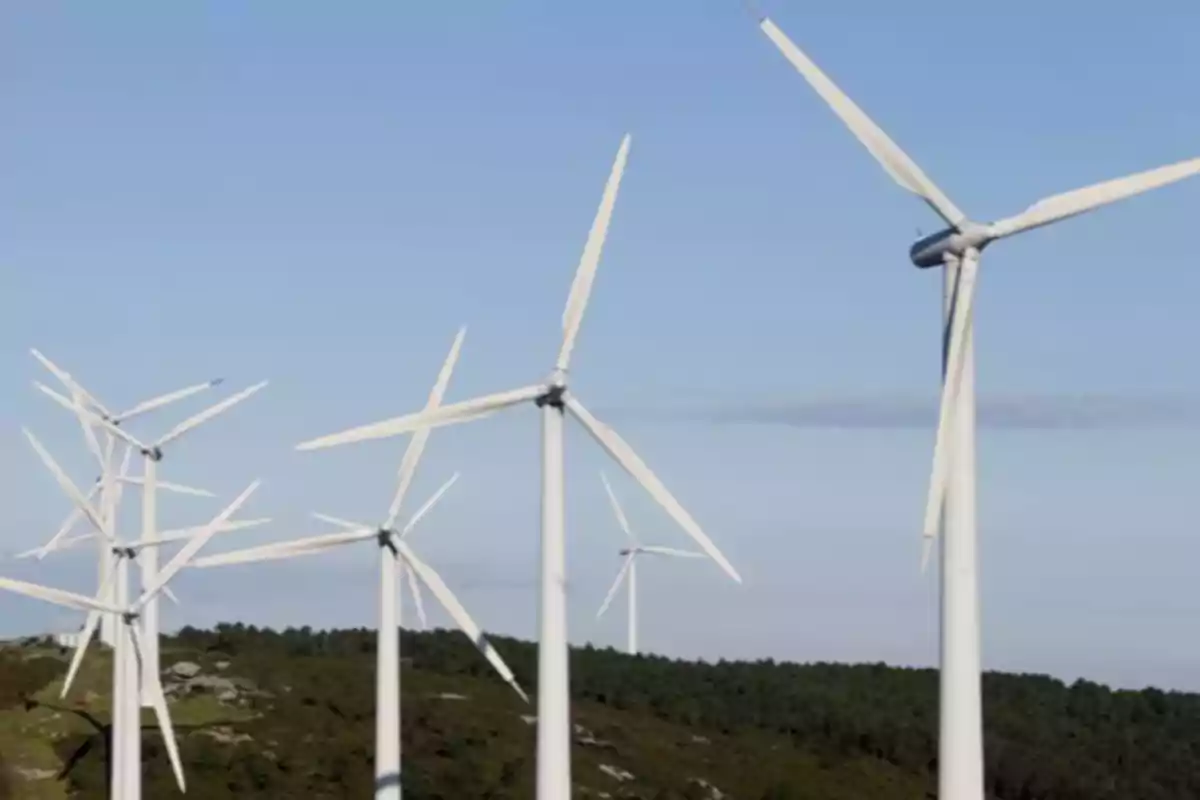
The government approved the seventh RIGI project with an investment of USD $275 million.
The construction of the Olavarría Wind Project has been confirmed, which will soon provide 180 MW of renewable energy
The Government of Javier Milei achieved a new milestone in its policy of attracting capital and strengthening the energy sector. The Large Investment Incentive Regime (RIGI), designed as a strategic pillar to restore international confidence in Argentina, approved the inclusion of the Olavarría Wind Farm, an initiative of US$ 255 million that will contribute 180 megawatts (MW) of clean energy to the national electricity system.
The announcement was made by the Minister of Economy, Luis "Toto" Caputo, who celebrated the addition of this seventh investment to RIGI: "The inclusion of the Argentine Renewable Electric Generation (GEAR) project in RIGI has been approved: this is the Olavarría Wind Project, an investment of USD 255 million that will contribute 180 MW of renewable energy. With this new initiative, the projects approved by RIGI now total more than USD 13 billion in investments in Argentina," Caputo stated on his X account.

The Olavarría Wind Farm, driven by PCR and ArcelorMittal Acindar through GEAR I S.A., will be built on a site of 4,500 hectares (11,120 acres) located 24 kilometers (14.9 miles) from Olavarría, Buenos Aires province. It will consist of 30 state-of-the-art wind turbines with a capacity of 6 MW each, which together will supply 340,000 homes per year.
The investment includes not only the wind farm itself, but also the construction of a new transformer station and a 25-kilometer (15.5-mile) high-voltage line, as well as expansion works in the national transmission system, including upgrades to the transformer stations in Ezeiza and Olavarría and a key reinforcement in the 500 kV Bahía Blanca–Ezeiza line. These works will also allow the addition of 260 MW in future renewable projects.
The economic impact will be immediate: 1,300 direct and indirect jobs, more than 30 supplier companies involved, the consumption of 2,100 metric tons (4,630,000 pounds) of iron and 24,000 metric tons (52,910,000 pounds) of cement just for the wind turbine foundations, and the installation of four kilometers (2.5 miles) of steel towers for the electrical connection.

In environmental terms, the benefits are equally significant: it is estimated that the wind farm will prevent the annual emission of 300,000 metric tons (661,387,000 pounds) of CO₂, equivalent to the absorption of 14 million trees in one year.
The CEO of ArcelorMittal Acindar, Federico Amos, celebrated the decision as a historic step: "The Olavarría Wind Farm marks a milestone in our path toward decarbonization. It will allow us to supply more than 65% of our operations in Argentina with renewable energy, reducing our carbon footprint and reaffirming our commitment to sustainability."
Meanwhile, the CEO of PCR, Martín Federico Brandi, emphasized the project's role in the country's transformation: "This project strengthens our commitment to the country's energy transition to build a more reliable, cleaner, and more competitive electricity matrix, in line with economic growth."
The RIGI, designed by Milei's government to guarantee legal, fiscal, customs, and exchange stability for 30 years, has already attracted the interest of more than20 projects that have accumulated investment commitments exceeding US$ 33.6 billion. The sectors benefiting include mining, oil & gas, renewable energy, and industry, with a strong presence in at least ten provinces.
In its debut, the regime attracted investments in Vaca Muerta and in major mining projects, such as El Pachón and Agua Rica (Glencore), for more than US$ 13.3 billion, following the elimination of export duties on minerals. Now, the Olavarría Wind Farm is positioned as one of the largest industrial ventures in Buenos Aires province and a symbol of the shift toward a more productive and modern Argentina.
With more than one hundred years of experience in oil, gas, renewable energy, and cement, PCR thus adds another milestone to its history. Together with ArcelorMittal Acindar, a leader in long steel production for more than 80 years, the business alliance stands as a symbol of the structural change promoted by the new government.
More posts: